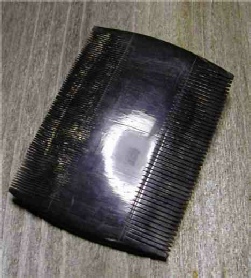Subject Guide

Mountain West
Malachite’s Big Hole
Personal Hygiene:
Personal cleanliness was not high on the list of priorities of the mountain men, and bathing was not practiced with any regularity in the mountains. In fact during the first half of the 1800’s, due to a lack of indoor plumbing and the time and effort required to heat water, few Americans, even in the cities, bathed with any regularity. There was also a belief at this time that baths in the winter were a source of colds and other illnesses. Consequently, many civilized Americans bathed as infrequently as once or twice a year. As plumbing systems in the cities improved, the frequency of bathing increased to as much as once a week. The Grahamites (followers of a particular health movement) went so far as to bathe three times a week, a practice many condemned as “unnatural.” On the other hand, bathing was practiced regularly by the western Indians, sometimes daily even during the winter.
Regardless of cleanliness, appearances were important to both Indian men and women, and even to some of mountain men. As a result, items for personal hygiene were usually included with the supplies packed to the mountains for rendezvous.
Prices listed below are St. Louis prices.
|
No. |
Units |
Item Description |
Cost |
|
7 |
dozen |
Crambo Combs |
56¢/dozen? |
|
3 |
dozen |
Crambo Combs |
25¢/dozen? |
|
2 |
dozen |
Fine Ivory Tooth Combs |
$1.25/? |
|
1 |
dozen |
Small Bone Combs |
$1.50/dozen |
|
2 |
dozen |
Razors in Cases |
37¢/each |
|
|
|
Shaving Soap |
|
|
7 |
dozen |
Metal Framed Looking Glasses |
|
|
10 |
dozen |
Paper Covered Looking Glasses |
3¢/each |
|
6 ½ |
dozen |
Pocket Looking Glass |
36¢/dozen |
|
3 ½ |
dozen |
Cakes Windsor Soap |
3¢/cake |
|
5 |
pounds |
Crude Borax |
|
 of head lice. In civilized parts head lice could be eliminated by washing the hair with kerosene, however, this remedy was not available in the mountains. Combs were often fine toothed on one side with more widely spaced teeth on the other. The more widely spaced teeth were used for removal of head lice from the hair, while the finely spaced teeth were used to break up and remove egg clusters.
of head lice. In civilized parts head lice could be eliminated by washing the hair with kerosene, however, this remedy was not available in the mountains. Combs were often fine toothed on one side with more widely spaced teeth on the other. The more widely spaced teeth were used for removal of head lice from the hair, while the finely spaced teeth were used to break up and remove egg clusters. 